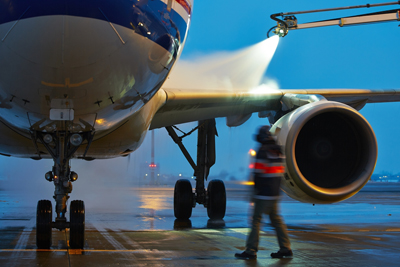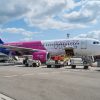 According to Boeing, since 2003, when low-cost airlines accounted for 7% of the market, they have grown to capture 9% more and are projected to reach 21% by 2033. The largest driver behind their success has been the ability to lower operating expenses and achieve quicker turnaround times. However, during the winter, being as efficient might become a real challenge.
According to Boeing, since 2003, when low-cost airlines accounted for 7% of the market, they have grown to capture 9% more and are projected to reach 21% by 2033. The largest driver behind their success has been the ability to lower operating expenses and achieve quicker turnaround times. However, during the winter, being as efficient might become a real challenge.
Despite the continuously growing demand, profit-wise most carriers still remain highly dependent on their performance during the high season. Unfortunately, these summer-related activity boosts are usually followed by winters of strong decline, not to mention the weather-related challenges. For instance, as the harsh winter of 2013 slowed all air traffic across Europe, the third largest airport in Frankfurt cancelled about 200 flights whilst London Heathrow and the main airports in Paris were forced to call off about 40 percent of departures.
“Most winter-related delays are usually caused by the lack of time which is spent cleaning the airport runways and performing de-icing and anti-icing procedures. As a result, by the time an aircraft is ready to take off, the effect of the fluids wear off and the procedure has to be repeated, costing LCCs additional money. Taking into account that the typical price per litre of fluid is $4-8, the whole procedure performed on a Boeing 737 may cost up to $7 500 or even more. Add this to the downtime related expenses and it becomes obvious why LCCs try their best to reduce their turnaround times by 20%-30% as compared to traditional airlines, applying penalties for every flight delayed due to inefficient support. Unfortunately, however, sometimes the delays are unavoidable,” comments Darius Aleknavicius, the CEO of Baltic Ground Services.
According to the executive, flight delays are usually a result of the inability to properly prepare for the possible extreme conditions of the upcoming season. For instance, in the  beginning of 2014 due to severe snow storms as many as 1003 commercial flights were cancelled in the United States. At the same time, in Oslo everything was running smoothly. Planes were taking off and landing precisely according to the time tables. The newest equipment allowed 10 tons of snow to be cleaned every single hour.
beginning of 2014 due to severe snow storms as many as 1003 commercial flights were cancelled in the United States. At the same time, in Oslo everything was running smoothly. Planes were taking off and landing precisely according to the time tables. The newest equipment allowed 10 tons of snow to be cleaned every single hour.
“When it comes to providing services to legacy and low cost carriers, almost every step differs. For example, unlike traditional carriers, LCCs do not offer free in-flight catering and thus it takes less time to load the supplies. However, when it comes to de-icing, the procedure is mostly the same, so its efficiency is highly reliant on strict coordination of various factors in airport operations. For instance, it is very important for all airport services to ensure the availability of an appropriate amount of de-icing fluid and the readiness of all the relevant equipment unused during the summer before the winter season starts. Unfortunately, however, airports often lack sufficient space dedicated specifically to performing de-icing procedures. All in all, it is important to put safety at the forefront of one’s activities. The rest is just teamwork,” concludes Darius Aleknavicius the CEO of Baltic Ground Services.





